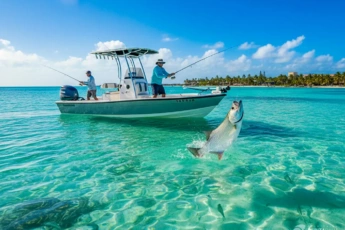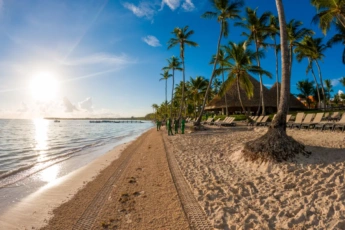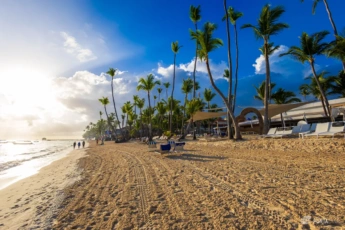Holidays in the Dominican Republic – What and Where Dominicans Celebrate in 2025?
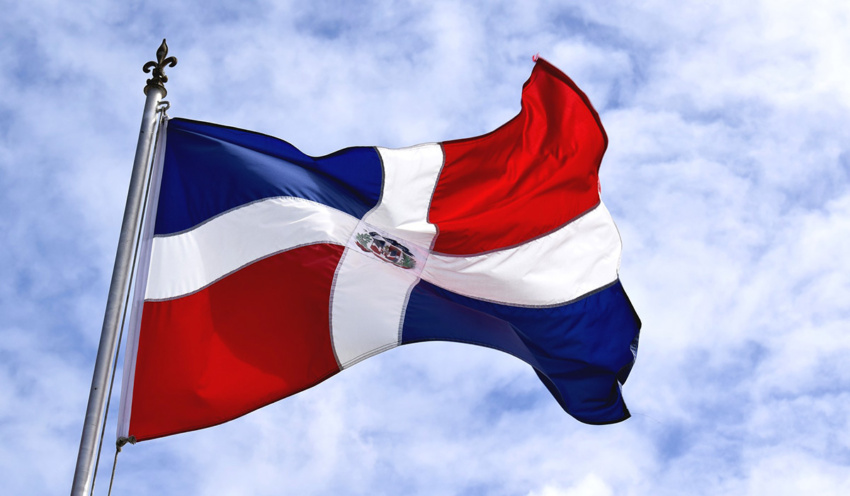
Public holidays in the DR
When, what and how do Dominicans celebrate? Which national holidays in the Dominican Republic are weekends, which are not? Which of them will be interesting for tourists to see? And what should you not come to? Read the answers in our article and see the Dominican holiday calendar.
Holidays calendar of the DR
| Holiday | Date | |
|---|---|---|
| 1. | New Year (Año Nuevo) | January 1 |
| 2. | Three Kings’ Day (Día de los Reyes Magos) | January 6 |
| 3. | Our Lady of Altagracia (Nuestra Señora de la Altagracia) | January 21 |
| 4. | Duarte Day (Día de Duarte) | January 26 |
| 5. | Independence Day (Día de la Independencia) | February 27 |
| 6. | Good Friday (Viernes Santo) | The date varies |
| 7. | Easter (Pascua) | The date varies |
| 8. | Easter Monday (Lunes de Pascua) | The date varies |
| 9. | Labor Day (Día del Trabajo) | May 1 |
| 10. | Feast of the Body and Blood of Christ (Corpus Christi) | The date varies |
| 11. | Day of Restoration (Día de la Restauración) | August 16 |
| 12. | Our Lady of Las Mercedes (Nuestra Señora de Las Mercedes) | September 24 |
| 13. | Constitution Day (Día de la Constitución) | November 6 |
| 14. | Christmas Eve and Christmas (Nochebuena, Navidad) | December 24-25 |
In the Dominican Republic, there is no transfer of holidays as such. Here some holidays have floating dates so that the holiday and day off falls on Monday or Friday. The rules are customized for each case. Below we will talk about each holiday in detail and dwell on these rules.
New Year (Año Nuevo) celebrated on January 1
A day off is January 1, but December 31 is a working day. In the Dominican Republic, New Year is one of the main family holidays. It is not customary here to walk the streets at night.
The main New Year’s tradition in the Dominican Republic is general cleaning of the house in order to “sweep” all the negative of the last year out of the house to make room for the positive of the coming year. All old and unnecessary things should be thrown away.
After cleaning, all brooms, brooms, and mops must be thrown away, too. In exchange, buy new ones, but you can’t bring them into the house, you need to leave them outside the door. New cleaning tools can only be brought home on January 1st. But it is impossible to categorically clean up on January 1 if you don’t want to “sweep away the luck of the New Year.”
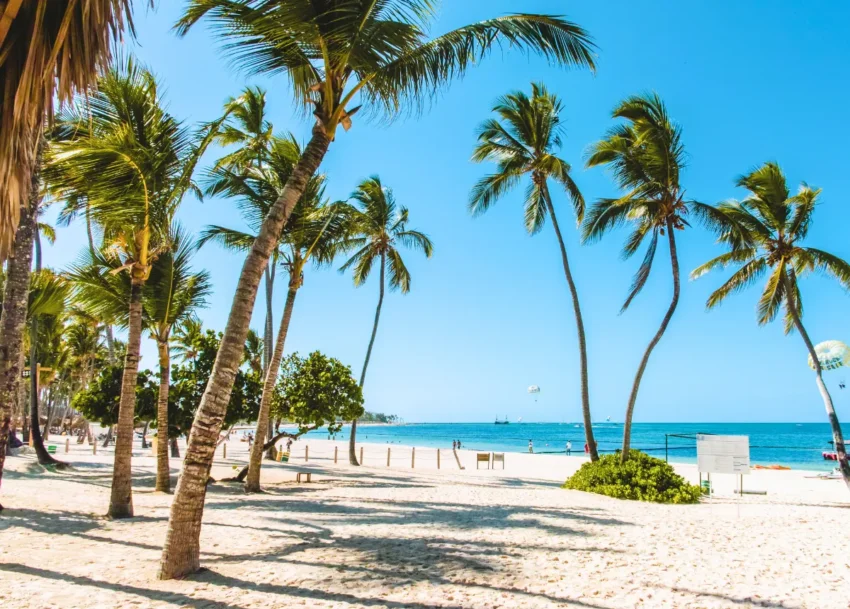
Punta Cana’s white sand beaches
Midnight from December 31 to January 1 in the DR is called “Cañonazo”, which translates as “cannon shot”. At the time of the striking clock, there is a tradition of eating 12 grapes, probably taken over from the Spaniards. At midnight, all windows and doors are opened, it is believed that this is how evil spirits from the old year will fly out.
It is a custom to spend the night at a family dinner. They eat fried pork or chicken. They cook “Ensalada Rusa” – this is the local version of the Olivier salad. In the Dominican Republic it consists of carrots, potatoes, boiled eggs, onions, corn and raisins, everything is poured with mayonnaise.
In Santo Domingo and other cities, there are New Year’s fireworks, but far from grandiose. Mass celebrations are held in the squares, but far from numerous. Punta Cana claims to be the epicenter of the holidays even more than the capital of the Dominican Republic – Santo Domingo.
In resorts, hotels and restaurants gala dinners are organized. Celebrating the New Year in the Dominican Republic has become fashionable among Americans and Europeans, and now you need to sign up for such a gala dinner in advance.
There are dinners with just a couple of courses and a couple of performances by local animators, and sometimes with a gorgeous dinner buffet and an all-night show program and fireworks. Participation price – from 100 to 500 dollars.
Three Kings’ Day (Día de los Reyes Magos) celebrated on January 6
Feast in memory of the event of the arrival of the Magi to the baby Jesus. Another name is Epiphany. Celebrated on the 12th day after Christmas.
In the Dominican Republic, it is customary to give gifts to children on Epiphany, and not on Christmas or New Year. This is the situation in Spain and in most Spanish-speaking countries. Children are told that the wise men bring gifts. Before the Epiphany, children write letters to the Magi, telling them about the desired gifts. On the night of January 5, children leave bundles of grass (to feed the camels), cookies and sweets for the Magi. In the morning, they pick up and open gifts.
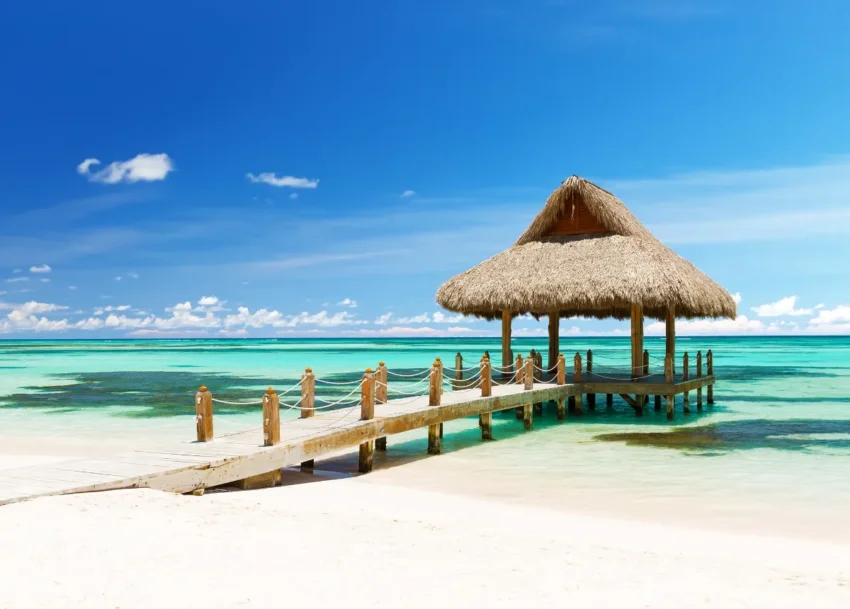
Bavaro Beach, Punta Cana
Please note that the authorities are transfering the day off on Epiphany. If the holiday falls on Saturday or Sunday, then they make an additional day off on the next Monday. For tourists in the Dominican Republic, this holiday goes unnoticed. Mass events are arranged, but only in cities, and not in resort areas.
Our Lady of Altagracia (Nuestra Señora de la Altagracia) celebrated on January 21
Feast in honor of the image “Our Lady of Altagracia”, brought to the Dominican Republic in the 16th century by the Treggio brothers. They were one of the first colonists on the island, the icon was kept at home.
The Trejo brothers donated the icon to the church in Higuey City. In 1572, a separate chapel was built for the icon, and since 1971 it has been rebuilt into the Cathedral Basilica of Our Lady of Altegrasia in Higuey.
The Virgin Mary is the patron saint of the DR, along with Saint Dominic. It is believed that the icon of the Virgin of Altegrasia protects the entire country and the Dominicans from disasters and war. It is not surprising that a national holiday is held in her honor. January 21 is a purely religious day. Solemn masses are held in the churches. Believers travel to Higuey city to bow to the image. Ordinary Dominicans attend Mass and then spend time with their family.
For tourists at the resorts, this holiday goes unnoticed.
Day of Juan Pablo Duarte (Día de Duarte) celebrated on January 26
In 1822, the whole island came under the rule of the state of Haiti (now the western part of the island), and the population of the Dominican Republic (the eastern part of the island) was oppressed and wanted independence.
The independence movement was led by Juan Pablo Duarte and founded the insurgent organization Trinitaria. By 1844, the Dominicans had won their independence. Duarte became a national hero, and his birthday (January 26) is celebrated as a national holiday. If January 26 falls on Tuesday, Wednesday, Thursday or Friday, then the holiday is postponed to the next Monday. In 2018 – January 29 (Mon), in 2019 – January 26 (Sat), in 2020 – January 26 (Sun), in 2021 – January 25 (Mon), in 2022 – January 24 (Mon).
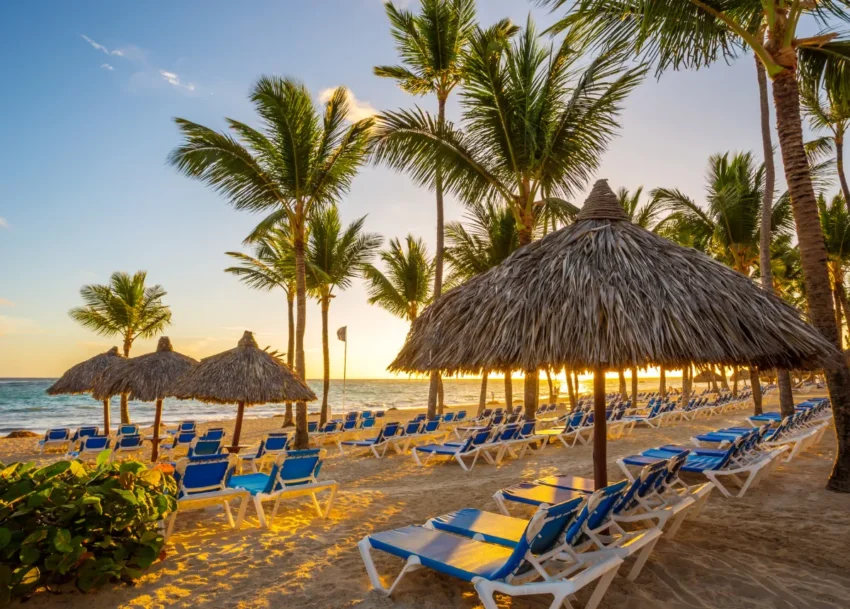
Sunset on the beach in Punta Cana
The epicenter of the celebration is the grave of Juan Pablo Duarte in the Altar de la Patria mausoleum in Santo Domingo. Flowers are brought to the grave, a parade is held, usually modest. For tourists, this holiday is not noticeable at all.
Independence Day (Día de la Independencia) celebrated on February 27
Since the discovery by Christopher Columbus in 1952, the island of Haiti was a Spanish colony. In 1975, the French captured the island and then the Dominican Republic passed from hand to hand.
In 1822, the island was completely occupied by the Haitians – people from the western part of the island. This period of history is considered “black times” in the Dominican Republic. In 1844, on February 27, the Trinitarian secret society declared independence.
Dominicans celebrate Independence Day throughout the month of February, and on February 27th is the culmination of the holiday. The people of the Dominican Republic are generally very fond of celebrating, there would be a reason.
On February 27, military parades are held, the largest in Santo Domingo. Most likely, all military countries participate in the parades, because there are only 40,000 of them here. Ordinary Dominicans “arm themselves” with the flags of the country of various sizes and walk, have fun, communicate. In the city of La Vega, the famous local festival just ends, and the culmination of the festival coincides with Independence Day.
For tourists at the resorts, the holiday goes unnoticed.
Good Friday, Easter, Easter Monday
(Viernes Santo, Pascua, Lunes de Pascua)
As in all Spanish-speaking countries, in the Dominican Republic, Easter week is called “Semantha Santa”, begins on Palm Sunday (the day of Jesus Christ’s entry into Jerusalem) and ends on Easter Sunday (the day of the resurrection of Jesus Christ). There is no Easter bunny, no Easter eggs, no Easter cakes. And frankly speaking, Easter in the Dominican Republic is very boring. Spain has grandiose parades with orchestras and platforms, the Dominican Republic does not. There are traditions, but they are not particularly interesting.
On Good Friday, the sale and drinking of alcohol is prohibited in many places – on beaches, in parks and other public places. The ban is usually in effect until noon of Saturday. Loud music and auto and motorcycle sports are prohibited throughout Easter week.
It is customary for Dominicans to have picnics during Easter week, usually on the beaches. Dominicans come to beach hotels, but in small groups, they usually do not interfere with other tourists.
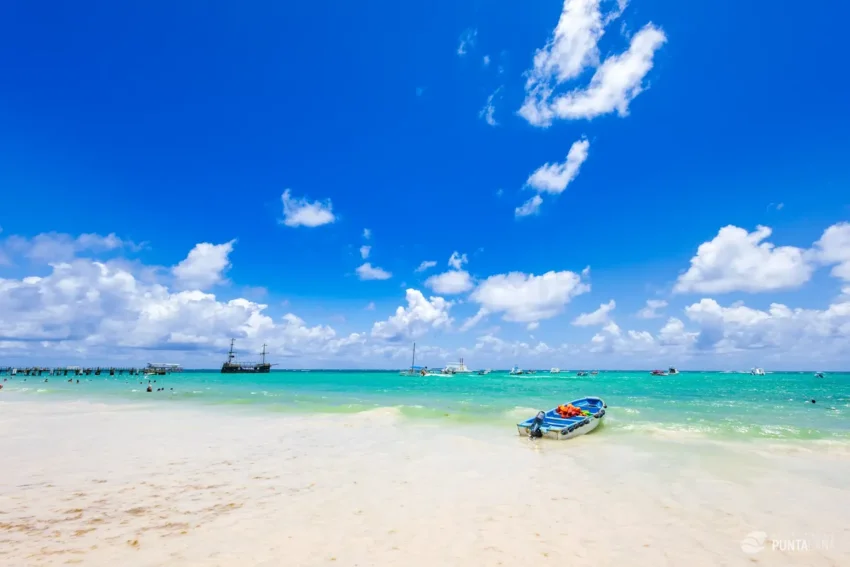
Los Corales Beach and sea view
Nothing changes for tourists in All Inclusive hotels. The ban on alcohol in hotels does not apply. Some of the activities on the beach may only be unavailable: jet skis, parachute flights or banana rides, as the noise of the motors is prohibited. Discos and casinos may be temporarily closed.
On Easter in the Dominican Republic, the popular dish “Habichuelas con dulce” is a paste made from beans with coconut and condensed cow’s milk, raisins, nutmeg and cinnamon. If you find yourself in the cities of the Dominican Republic on Easter, be sure to taste. At the resorts, you will hardly be able to taste it.
Labor Day (Día del Trabajo) celebrated on May 1
If May 1 falls on Tuesday, the holiday is postponed to Monday. If it falls on Thursday, it is postponed to Friday. In 2018 – April 30 (Mon), in 2019 – May 1 (Wed), in 2020 – May 1 (Fri), in 2021 – April 30 (Fri), in 2022 – May 1 (Sun), in 2023 – 1 May (Mon), in 2024 – May 1 (Wed), in 2025 – May 1 (Thur), in 2026 – May (fri).
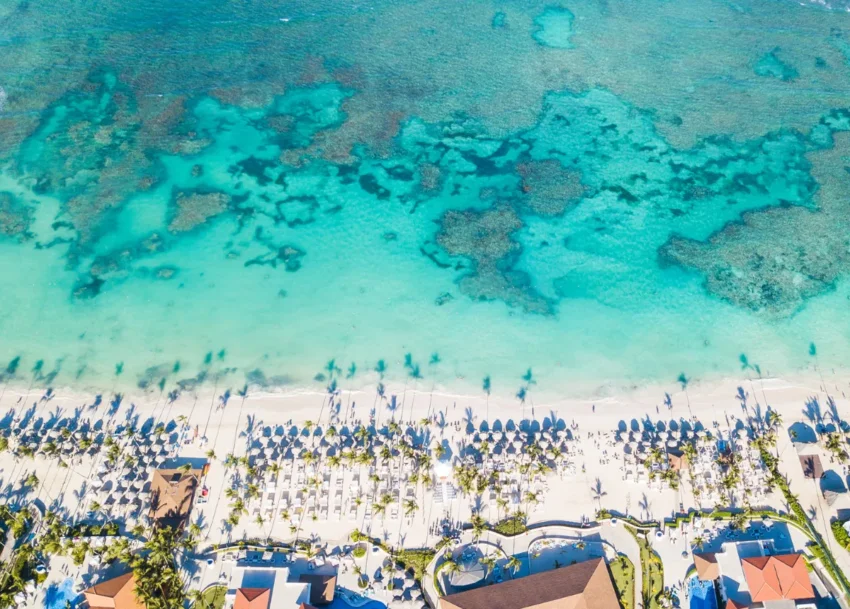
Bird’s eye view of the beach in Punta Cana
As in most countries, nothing special happens in the DR on Labor Day. There are no rallies, no demonstrations, no parades. The Dominicans love to walk and drink, and May 1 is a great occasion. There are a lot of people neat the landmarks, the amusement parks are overcrowded, there are almost no available tables in restaurants and cafes. We recommend that tourists spend this day at the hotel.
Feast of the Body and Blood of Christ
(Corpus Christi)
Celebrated on the 60th day after Easter Sunday. In 2018 – May 31, 2019 – June 20, 2020 – June 11, 2021 – June 3, 2022 – June 16, 2023 – June 8, 2024 – May 30, 2025 – June 19, 2026 – June 4.
This is a holiday in honor of Holy Communion. At the Last Supper, Jesus broke off the bread and said: “This is my body,” took a cup of wine and said: “This is my blood.” Catholics take these words literally.
This is one of the religious holidays in the Dominican Republic. It is customary for believers to attend Mass and receive communion. On this day, two solemn masses are held. In some cities, small processions are organized, where bread and wine are carried, declaring them the body and blood of Christ.
For tourists at the resorts, the holiday goes unnoticed.
Restoration Day (Día de la Restauración) celebrated on August 16
In 1844, the Dominican Republic won independence, but the economic situation left much to be desired. By 1861, the country was almost bankrupt. President Pedro Santana reached an agreement with Spain and the country became a Spanish colony again. The majority of the population did not like this solution to the problem, and another struggle for independence began for the DR.
On August 16, 1863, a 15-man detachment under the command of Santiago Rodriguez occupied Capitollo Hill and planted the flag of the independent Dominican Republic on it. This event went down in history as “Grito de Capitollo”. The War of Independence lasted until 1965, when Queen Elizabeth II of Spain recognized the sovereignty of the Dominican Republic.
There are no changes at the resorts, no one notices the holiday.
Feast of Our Lady of Merciful (Mercedes)
(Nuestra Señora de Las Mercedes) celebrated on September 24
According to legend, before sailing home, Columbus erected a large wooden cross on one of the hills in the territory of the present Dominican Republic. The local Indians did not like it, a battle took place. The Virgin Mary herself came to the aid of the Spaniards, she put the natives to flight.
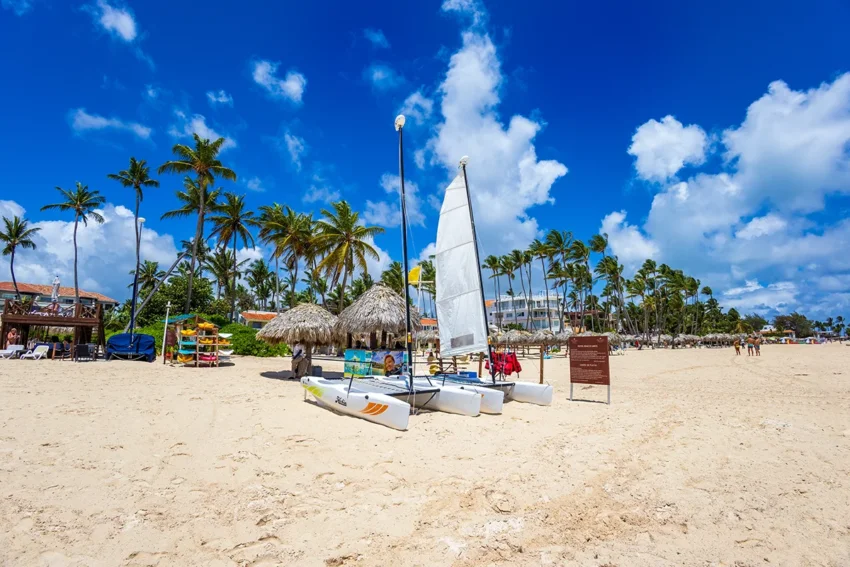
Bavaro Beach
September 24 – a holiday in honor of the Virgin Mary and those events. On that very hill there is now a Catholic church, this is the town of Santo Cerro. Thousands of Dominicans travel to this place. In cities, parades and processions are held, but not numerous. Festive masses are held in churches. But most Dominicans prefer to spend time with their family or celebrate with friends.
For tourists at the resorts, the holiday on September 24 goes unnoticed.
Constitution Day (Día de la Constitución) celebrated on November 6
The holiday is celebrated on the next Monday or Friday to 6 November. In 2018 – November 5, in 2019 – November 4, in 2020 – November 9, in 2021 – November 8, in 2022 – November 7, in 2023 – November 6, in 2024 – November 4, in 2025 – November – 7, 2026 – November – 2.
In 1844, the constitution of the Dominican Republic was adopted. Please note that this is the anniversary of adopting the First Constitution, which was adopted in San Cristobal near Santo Domingo.
In total, there have been 39 constitutions in the DR throughout history – this is a world record. At the time of your reading this article, the 40th constitution may already be in force, and maybe the 41st. Only the record is “fake”, the Dominicans simply announce a new constitution even with minor amendments.
Small parades and processions are held on Constitution Day. But for most Dominicans, it’s just an extra day off. Due to the postponement, it turns out 3 days off – even more pleasant.
For tourists, this holiday goes unnoticed.
Christmas Eve and Christmas (Nochebuena, Navidad) celebrated on December 24 and 25
Christmas can be called one of the most interesting holidays in the Dominican Republic. Dominicans have many interesting traditions of celebration. A week before Christmas, it is customary to congratulate each other with the phrase “Feliz Navidad” (“Merry Christmas”). On Christmas Eve, all shops, banks and other establishments are closed by 6 p.m., but sometimes they don’t work at all.
The first interesting tradition is called Charamicos. The Dominicans use twigs to make figures of trees, stars, angels, and deer. It is customary to place these figures not only at home, but also on the streets. It is believed that the Dominicans imitate snow-covered trees in this way, because they have no snow and cannot have it.
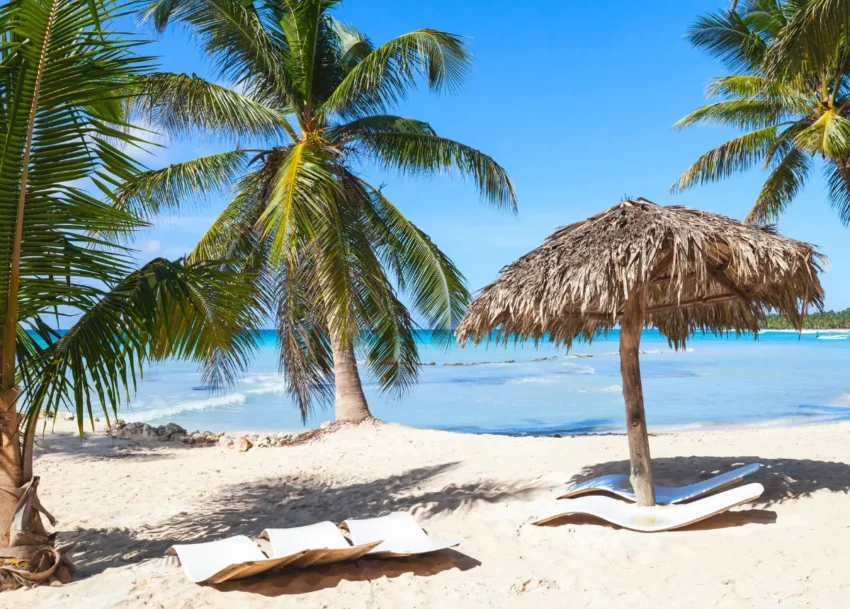
Beach view during the Isla Saona Trip
Another interesting tradition is called Angelitos, in other countries it is called “Secret Santa”. For this, a lot of people get together. Usually, they are work colleagues or members of the same family. Everyone writes their name and wishes for gifts on a piece of paper, the pieces of paper are thrown into the common basket. Everyone takes out a piece of paper with a name and becomes for this person his or her “angelitos”. The task of the angelitos is to give gifts to their ward. The task of everyone in the game is to figure out his or her angelitos and not to be identified by others. Of course, on Christmas Eve everyone reveals the truth about angelitos – who was related to whom.
Children are given gifts for Christmas, but small ones. The main day of gifts for children in the Dominican Republic is Epiphany (Three Kings Day) on January 6.
The night from 24th to 25th December is called “Noche Buena”. Religious Dominicans go to church for a solemn mass. However, at noon on December 25, another solemn Mass is held, one might say “for an encore.” Those who do not want to come to church at night can do it during the day. At night it is customary to dine with the family. The set of dishes for Christmas dinner is about the same as for the New Year: fried pork, fragrant bread “Telera”, Olivier salad, pie with meat.
In the Dominican Republic there is a very interesting phenomenon called “The Arrival of the Dominican Yorks.” A lot of people from the Dominican Republic live in the United States, there are about 2 million of them. At Christmas almost all of them fly home.
Now imagine the situation! In the small Dominican Republic, where only 10 million people live, another 2 million “dumps” at once. What happens as a result? Congested airports, transport, lack of taxis, no tickets for intercity buses and a lot of other problems. Therefore, Christmas Eve is considered the worst time for independent tourists in the Dominican Republic. However, there is almost no difference for tourists on vouchers (package tours), except that you will stand at customs and migration control for an extra 20-30 minutes.
Holidays in the Dominican Republic without a day off
Several important religious holidays are not national: Epiphany (first Sunday after January 6 – Baptism of Christ), Ascension Day (39th day after Easter), Pentecost (50th day after Easter), Day of the Immaculate Conception. Mother’s Day (4th Sunday in May) and Father’s Day (4th Sunday in July). On these holidays, giving gifts and congratulating mothers and fathers, husbands and wives (if there are children) is customary.
Carnolestadas Festival takes place the week before Lent. There are no days off that week.
Conclusion
National holidays in the Dominican Republic delight not only local residents but also tourists who gladly take part in festive events. Of course, these are not all holidays in the Dominican Republic! There are a lot of them, they are all very colorful and differ from the traditions of other countries. If you are interested in the culture of the Dominican Republic, then you should definitely see the celebration of each of them! Don’t forget to visit the Dominican Carnival in winter!
Updated on: . Author:

